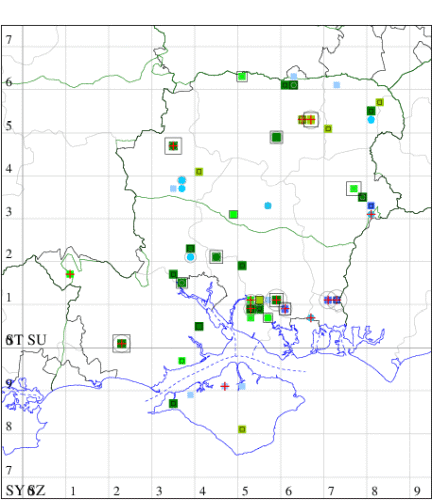Sallow Clearwing
Synanthedon flaviventris
Checklist Number52.009 [B&F: 0377]
Verification
Record will require further evidence, at least a good photograph, unless CMR is aware recorder has confidence in identification
Nationally scarce (Nb) in damp woodland and heathland in central southern and south-eastern England; adults appear only in even years. In Hampshire where the species was discovered new to Britain in 1926 near Southampton, the galls made by the larva of this species on Grey Sallow Salix cinerea are sometimes locally common in the winters of "even" years, mainly in the south-east of the county, but the insect is often heavily parasitised. There are a few scattered records from the Isle of Wight. Wingspan 17-20 mm. Day-flying. The early stages may be sought during the winter months, but synthetic pheromone lures are used to attract males nowadays, and this has led to a marked increase in records of the species in recent years. Larva feeds within stems of Sallow, over-wintering twice.


The abundance in each month is indicated as follows:
 No records
No records Very occasional
Very occasional Irregular
Irregular Uncommon
Uncommon Off-peak, but not unusual
Off-peak, but not unusual Off-peak, but not unusual
Off-peak, but not unusual Main flight time
Main flight time| J | F | M | A | M | J | J | A | S | O | N | D | |
|---|---|---|---|---|---|---|---|---|---|---|---|---|
| Adult |  |  |  |  |  |  |  |  |  |  |  |  |
| Larval |  |  |  |  |  |  |  |  |  |  |  |  |


(to SAL lure)().jpg)